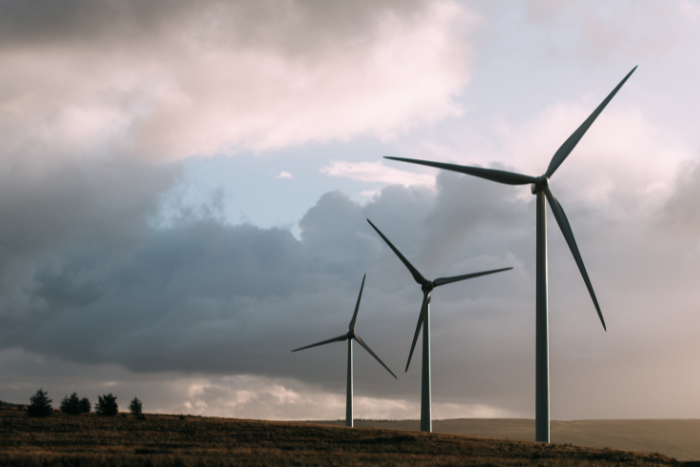The cumulative installed capacity of wind power in the country is less than one-fifth of the commercially exploitable potential due to poor utilisation of available sites, bidding woes, ignoring off-shore zones and more
A recent report by the Parliament Standing Committee on energy revealed that over the past eight years, the installed capacity of wind power has increased by only 93.45%. In 2014, it stood at 2,1042.58 MW as on March 31, 2014, and increased to 40,706.38 MW as on May 30, 2022.
On the other hand, installed capacity of solar power has exponentially increased by 2,063.86% during the same period. The committee said that despite heavy dependence on imports in solar energy, it has been prioritised over wind energy.
What’s hurting the potential?
The report noted that only a fraction of the country’s wind potential has been tapped till date, amounting to underutilisation of available natural resources. The National Institute of Wind Energy estimated the wind power potential of 302.20 GW at 100 metres above ground level and 695.50 GW at 120 metres above ground level in the country. As on May 31 this year, the cumulative installed capacity of wind power is only 40.71 GW i.e. less than one-fifth of the commercially exploitable potential. Less availability of wind-rich sites, shift in tariff regime from Feed-in-Tariff (FiT) to bidding mechanism, aggressive bidding by developers, etc. were some reasons attributed to the slow pace of capacity addition in the wind energy sector.
Wind resources are highly site specific and a majority of wind-rich sites of the country have already been exploited to a large extent. Most of the wind energy potential of the country is available in only eight states: Andhra Pradesh, Gujarat, Karnataka, Madhya Pradesh, Maharashtra, Rajasthan, Telangana and Tamil Nadu. To address this, there is a need to repower the old wind turbines, which not only have completed their life-cycle but also occupy the best wind sites, with technologically advanced and more efficient ones. The report also recommended issuing guidelines for recycling the old turbines.
Another major factor that disrupted the installation of projects was the shift away from the Feed in Tariff (FiT) mechanism. Wind energy capacity addition till the year 2017 was through FiT mechanism, which was then shifted to bidding route. This led to a reduction in profitability of the wind projects as there was a transition from relatively high tariff of ₹ 4-5/unit to more competitive tariff of ₹ 2.5-3/unit.
The report also noted that some developers resorted to aggressive bidding, thus lowering the prices to unsustainable levels and then backed out of the project. To remedy this, the committee recommended that provisions for imposition of heavy penalties on developers should be made in case they back out unilaterally and persistent defaulters should be blacklisted.
The need to include off-shore zones and hybrid models
On October 6, 2015, the National Offshore Wind Energy Policy was notified for development and use of maritime space within the Exclusive Economic Zone (EEZ) of the country for production of grid quality electrical power for national consumption. Eight zones each in Gujarat and Tamil Nadu were identified as potential offshore zones. Initial offshore wind energy potential within these identified zones has been estimated to be about 70 GW off the coast of Gujarat & Tamil Nadu, yet no offshore wind project has been established in the country till date. The report suggested establishing off-shore wind energy projects off-the coast after proper environmental impact assessment in a time bound manner.
The report also recommended that the ministry should promote setting up of wind-solar hybrid power plants. Wind and solar energy are complementary to each other since solar power can be harnessed only during the day, while wind power projects are more productive during the night and thus, the capacity utilisation factor of the hybrid plants will be more as compared to standalone solar and wind energy plants, along with the added benefits of greater grid stability, lower generation variability, efficient utilisation of evacuation infrastructure and optimum use of land resources.
The report said that in order to achieve the enhanced target of 500 GW of non-fossil fuel based installed energy capacity by 2030, there is a need to harness every possible renewable energy resource. Wind energy has a huge potential, but needs a big push to contribute significantly to the 2030 target.

